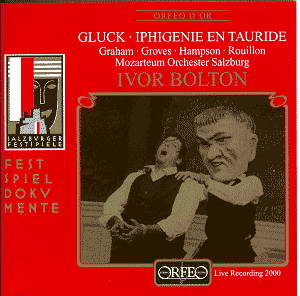 Composer: Andrejs Jurjans (1856-1922), Lucija Garuta (1902-1977)
Composer: Andrejs Jurjans (1856-1922), Lucija Garuta (1902-1977)
Works: To My Fatherland (1888), Sing, Rejoice (1895), Lord, Thy Land is Burning (1944)
Performers: Lilija Greidane (sop), Leima Andersone-Silare (mez), Karlijs Zarins (ten), Sergejs Martinovs (bass), Janis Sprogis (ten), Aivars Kranemanis (bar), Aivars Kalejs (organ), Chamber Choir – Ave Sol
Recording: Latvian Radio Choir / Leonids Vigners
Label: BIS
The recent recording of patriotic cantatas by Latvian composers Andrejs Jurjans and Lucija Garuta offers a compelling glimpse into the rich tapestry of Latvian choral music, particularly in the context of its historical struggles and artistic aspirations. Jurjans, a pivotal figure in the development of Latvian music, creates a stirring reflection of national identity in his works, while Garuta’s poignant composition written during the turmoil of World War II demonstrates a profound emotional depth. Both composers, through their distinct styles, encapsulate the essence of a nation grappling with its cultural heritage amid external pressures.
The performances captured in this recording are executed with remarkable precision and fervor. The Latvian Radio Choir, under Leonids Vigners, delivers an impressive array of tonal colors and dynamic contrasts. Particularly notable is the clarity of enunciation and the blend of voices that enrich the choral texture. In “To My Fatherland,” the choir’s robust articulation imbues the piece with a fervent patriotism that, while bordering on bombastic, resonates with the listener’s sense of national pride. The work’s orchestration, especially in the climactic moments, draws parallels to the grandeur found in the choral finales of Beethoven, yet it occasionally yields to a suffocating sentimentality that may detract from its overall impact.
Contrastingly, “Sing, Rejoice” is a celebration of liberation, infused with a lightness that belies its patriotic underpinnings. The joyful spirit of this cantata is infectious, reminiscent of the exuberance found in works by Sibelius or Nielsen. The choir’s delivery, marked by playful rhythms and buoyant melodies, showcases their ability to navigate the complexities of the score with both technical skill and emotional insight. In this context, the inclusion of two distinct cantatas by Jurjans within a single track feels somewhat limiting; these works deserve more nuanced exploration, ideally with separate tracks to facilitate deeper engagement.
Garuta’s “Lord, Thy Land is Burning” stands as an emotional centerpiece of the recording, encapsulating the turmoil of its time. The work opens with a tempestuous organ introduction that is both commanding and evocative, setting a dramatic tone akin to the apocalyptic visions found in the music of Havergal Brian. The visceral qualities of the choral writing are complemented by the soloists’ expressive performances, particularly Janis Sprogis, whose aria at 30:32 is a poignant highlight. His rich tenor voice, suffused with both nobility and an underlying sorrow, captures the essence of Garuta’s intention to convey suffering and resilience. The contrasts between the stormy passages and the reflective, prayer-like sections are expertly navigated, creating a powerful emotional arc throughout the work.
Sound quality is generally excellent, with a clarity that allows the intricate interplay of voices and instruments to shine. However, the decision to allocate the lengthy Garuta cantata to a single track does detract from the listener’s ability to fully appreciate its structural nuances. An index with subdivided sections would have enhanced the accessibility of this intricate work, allowing for a more focused listening experience.
The historical significance of these compositions cannot be overstated. Both Jurjans and Garuta represent the burgeoning cultural identity of Latvia at pivotal moments in its history. Their ability to weave together national themes with universal human emotions gives this recording a depth that transcends mere patriotism. The evocative nature of Garuta’s work, particularly, elevates it beyond its context, making it a compelling study in the intersection of art and adversity.
This recording serves as a vital contribution to the understanding of Latvian choral music, showcasing the unique voices of Jurjans and Garuta. While Jurjans’ works may occasionally fall prey to a certain bombast, they are nonetheless resonant examples of the national spirit. Garuta’s cantata, with its imaginative scope and emotional intensity, asserts itself as a significant achievement worthy of greater recognition. The Latvian Radio Choir’s performances are commendable, and while the recording’s structural choices may pose some challenges, the overall experience is one of discovery and profound resonance.



